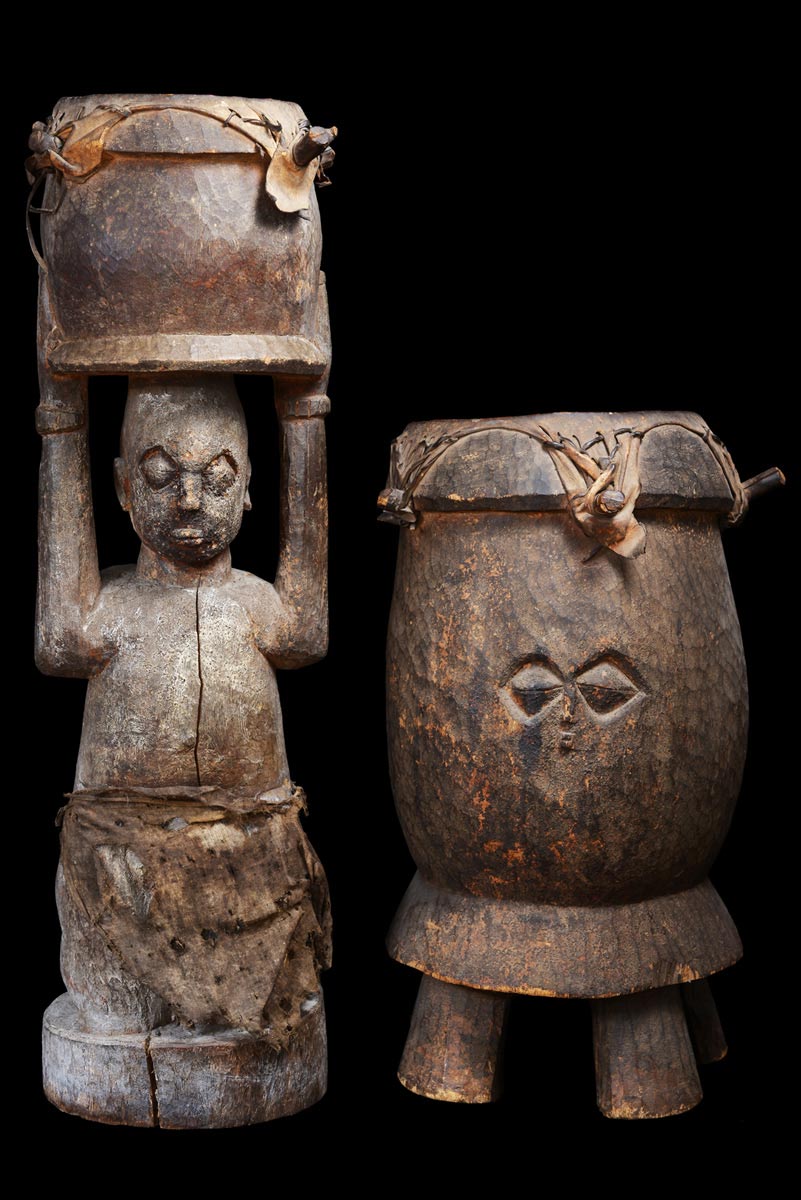drums of the world - trommeln der welt
The drums you can see on this drum museum website are part of a larger collection which is unique in Germany.
In the future the entirety will be housed in a permanent display with public access in order to help people understand the worldwide significance of drums.
The collection with its many artifacts creates a connection among cultures around the world.
There are around 400 drums and slit gongs from more than 150 distinct cultures.
(Die Trommelsammlung von Ulli Siebenborn, von der Sie einen Teil auf der Trommel Museum
website sehen können, umfasst etwa 400 Trommeln und Schlitztrommeln aus Afrika, Trommeln aus Neuguinea und Schamanentrommeln aus Nepal und Tibet.)
shaman drums / Schamanentrommeln : Nepal & Tibet & Usbekistan // Royal drums / Trommeln : Ashanti & Kuba - Congo // bata drums / Trommeln : Nigeria & Cuba //
drums & slit gongs / Trommeln & Schlitztrommeln - Afrika / Africa : Ashanti, Attie, Baga, Bakongo, Bamana Bamum, Bangwa, Bashilele, Baule, Chokwe, Dan, Dengese, Ewe, Fang, Genya, Hemba, Lozi, Luba, Lunda, Mangbetu, Maniema, Mayombe, Pangwe, Punu Senufo, Songye, Tetela, Tikar, Yaka, Yoruba ... //
slit drums & kundu drums / Trommeln & Schlitztrommeln : Neuguinea / New Guinea & New Britain : Abelam, Asmat, Astrolabe Bay, Fly River, Geelvink Bay, Huon Gulf, Je Anim, Iatmul, Kwanga, Lake Sentani, Maprik, Marind Anim, Massim, Mimika, Motu, New Britain, Nomad River, Papuan Gulf, Ramu, Sepik, Siassi, Telefomin, Torres Strait, Torricelli Mountains, Vokeo, Wakde Island, Wantoat, Waropen Coast, Western Highlands, Yangoru Boiken, Yuat River... ///
drums / Trommeln from: Gabon, Zaire, Tanzania, Cameroon, Guinea, Senegal, Angola,
Benin, Ivory Coast, Ghana, Congo, Zaire, Liberia, Malawi, Mozambique,
Nigeria, Zambia, Zimbabwe, Rwanda, Uganda, Indonesia, Nias, Sumba, Thailand ...
In traditional societies, drums serve purposes that reach beyond their
use as musical instruments. The use of the drums, their sound and
appearance reflect societal world view, tradition and history.
Their significance becomes apparent not only in the sophisticated
musical styles, but also externally, in the myriad forms of body shape,
drum skin attachment and decoration. In many African cultures drums
served as symbols of royal presence and power.
In Ankole (Uganda) it went so far as the royal drums having their own
cattle herds, servants and milk carafes which were refilled daily.
Visitors to the courts of the Timi of Ede, Nigeria were announced by
talking drums, and the regent himself used a talking drum to give
commands to his servants.
The diversity of drums is manifested in their usage. There are talking
drums, holy drums, drums to accompany work, status drums, drums for
festivities, for accompanying dance, drums of healers and shamans, drums
related to ancestor worship, secret societies and initiation rites...
In many cultures drums escort people from birth to death and beyond.




